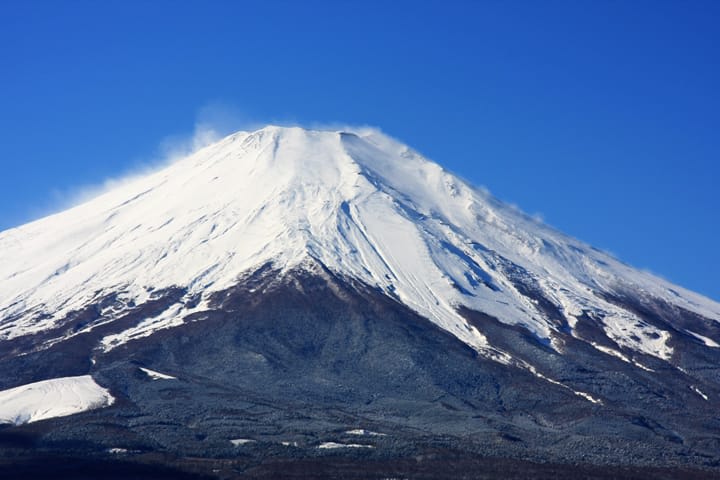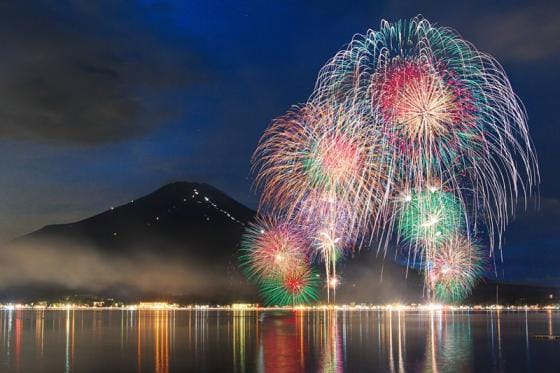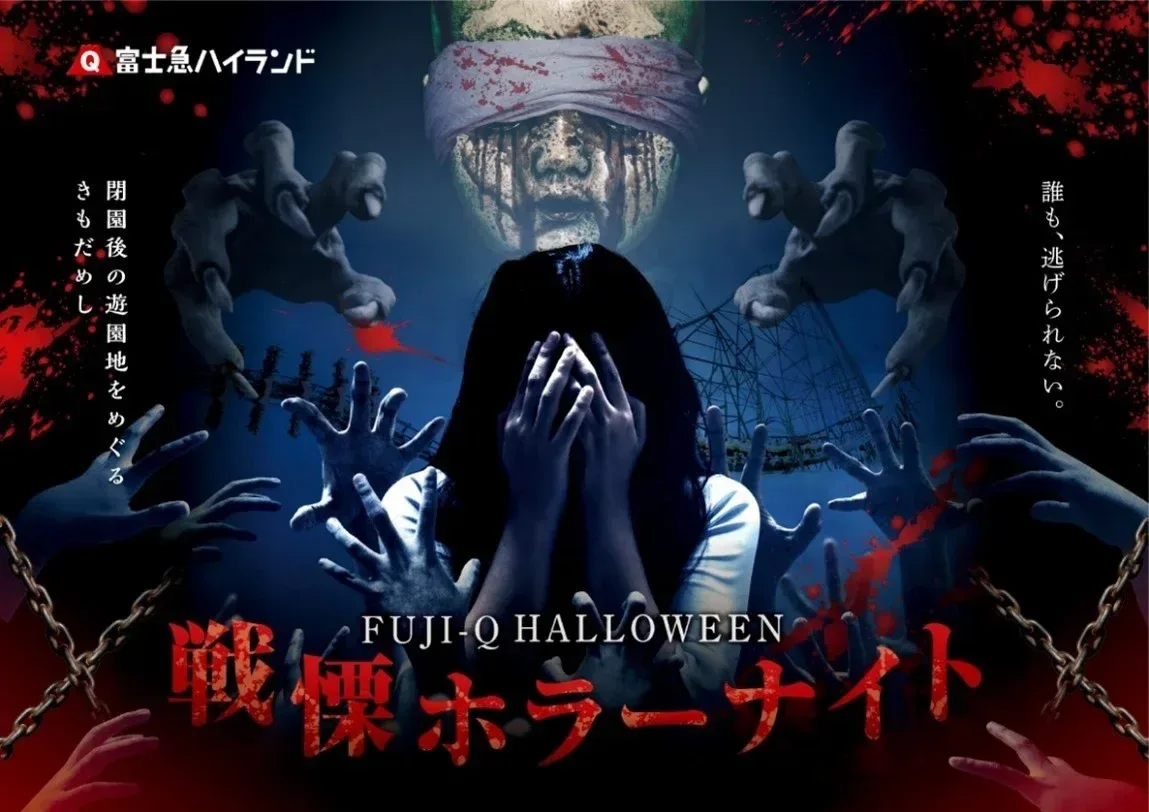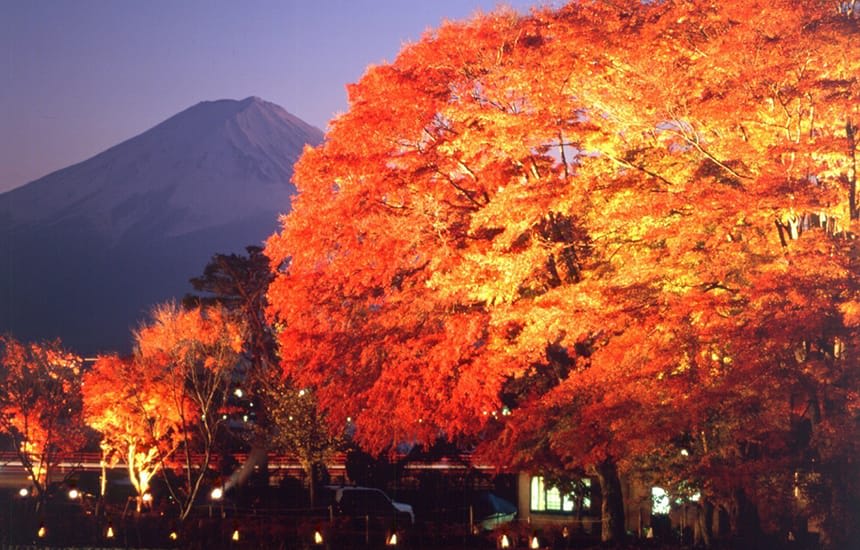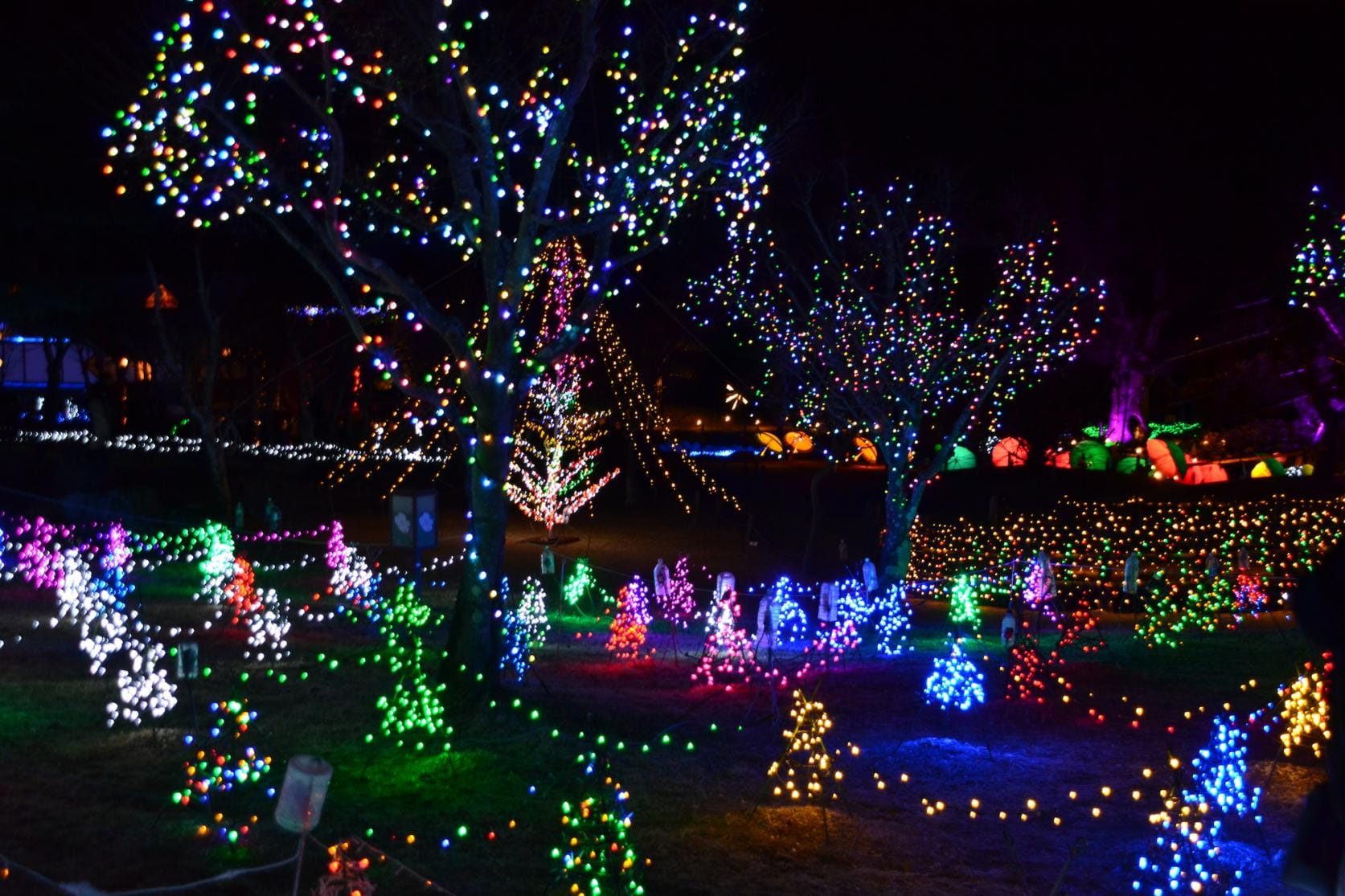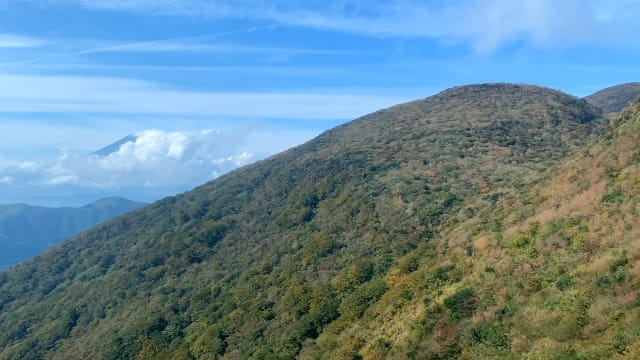Mt. Fuji Weather Guide 2025: Seasonal Climate Insights, Best Viewing Times, and Climbing Conditions
It's been long time since I started writing articles for Magical Trip Media, and I've written over 400 articles. With the transition into 2025, I've decided to update my articles based on both my experience and the latest information.
One reason for this update is the growing interest in tours around Mount Fuji. Since the Mount Fuji area consists of several regions, it can be challenging for tourists to plan their own itineraries.
Magical Trip has finally launched private tours that take visitors around tourist spots by car with guides who know the Mount Fuji area inside and out.

Launched in December, Magical Trip's "Mt. Fuji Full-day Nature Guided Tour with a Private Chartered Car & Guide" is a flexible tour that adapts the itinerary based on guests' interests.
The tour has already received great reviews from many guests who enjoyed the magnificent nature around Mount Fuji and its excellent local cuisine.
Since you can efficiently visit all the must-see spots around Mount Fuji in one day, I highly recommend taking this tour during your Tokyo trip.
Introduction
Mt. Fuji, a UNESCO World Heritage site, has been beloved as Japan's symbol since ancient times.
Beyond its solitary beauty, it has been both feared and revered as a divine mountain due to its repeated volcanic eruptions throughout history.
Since the 12th century, climbing Mt. Fuji has become popularized, and even today, many climbers visit during summer. While Mt. Fuji is a destination everyone dreams of conquering, as Japan's highest mountain, it presents natural challenges more severe than one might imagine.
Today, we'll thoroughly examine Mt. Fuji's climate and weather characteristics, and share essential rules for a safe and enjoyable trip.
Table of Content
・The Climate Around Mt. Fuji Varies Significantly with Altitude
Climate at 1,000m/Climate Around Fujinomiyaguchi 5th Station (2,400m)/Climate Near Mt. Fuji's Summit (3,776m)
・Climate During Climbing Season (Early July - Mid-September)
Climate and Recommended Clothing during Climbing Season
・Climate Before Climbing Season (Spring to Summer)
Climate and Recommended Clothing from Spring to Summer
・Climate After Climbing Season (Autumn to Winter)
Climate and Recommended Clothing from Autumn to Winter
・Winter (December - March) Climate
Climate and Recommended Clothing during Winter
・[Seasonal] Recommended Events with Highlights
Particularly noteworthy events around Mt. Fuji by season
・Summery
Article Summary and Secret Tours Offered by Magical Trip
The Climate Around Mt. Fuji Varies Significantly with Altitude
Mt. Fuji, Japan's highest mountain, is truly the nation's symbol.
The weather and temperature between the mountain base and the summit (above 3,000m) are completely different.
At the summit, with no surrounding obstacles, extremely strong winds blow frequently - comparable to typhoon-force winds. As evidenced by year-round snow, even during midsummer heat waves at ground level, the summit experiences winter-like conditions. This is why even in summer, there's a risk of fatal hypothermia.
To safely enjoy Mt. Fuji tourism, it's crucial to consider the altitude of areas you'll visit and prepare appropriate equipment.
Climate at 1,000m Altitude (Around Lake Kawaguchi)
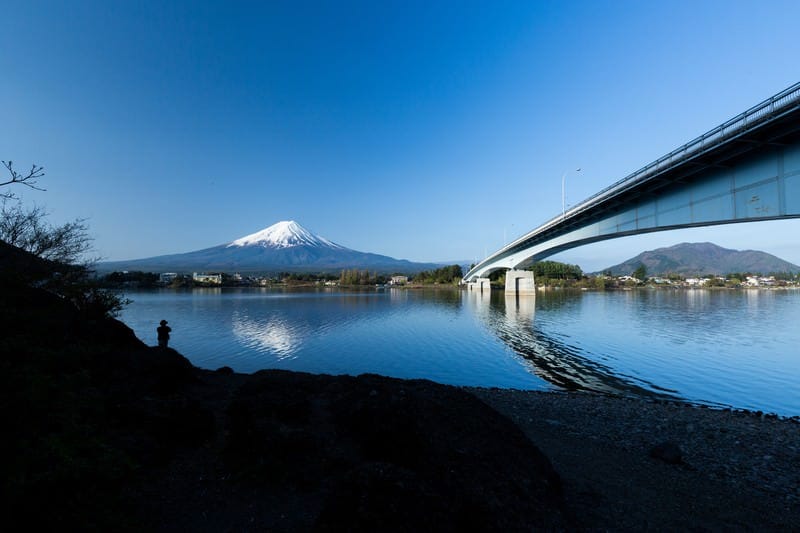
Mountain temperatures decrease proportionally with altitude. Temperature drops approximately 0.6°C per 100m elevation gain. Remember that at 1,000m elevation, there's about a 6°C difference compared to ground level.
The lower mountain areas around 1,000m can be enjoyed even in midwinter if there's no snow. However, UV radiation is 10-12% stronger than at ground level, so year-round UV protection is essential.
[Tourist Spots at 1,000m]
- Fuji Five Lakes (Lake Yamanakako, Lake Kawaguchiko, Lake Saiko, Lake Shojiko, Lake Motosuko *800m-1000m)
- Asagiri Highland
- Fuji-Q Highland
- Mt. Fuji Panoramic Ropeway and Observatory
- Kitaguchi Hongu Fuji Sengen Shrine
- Suwa Forest Nature Park
- Michi-no-Eki Fujiyoshida
Climate Around Fujinomiyaguchi 5th Station (2,400m)
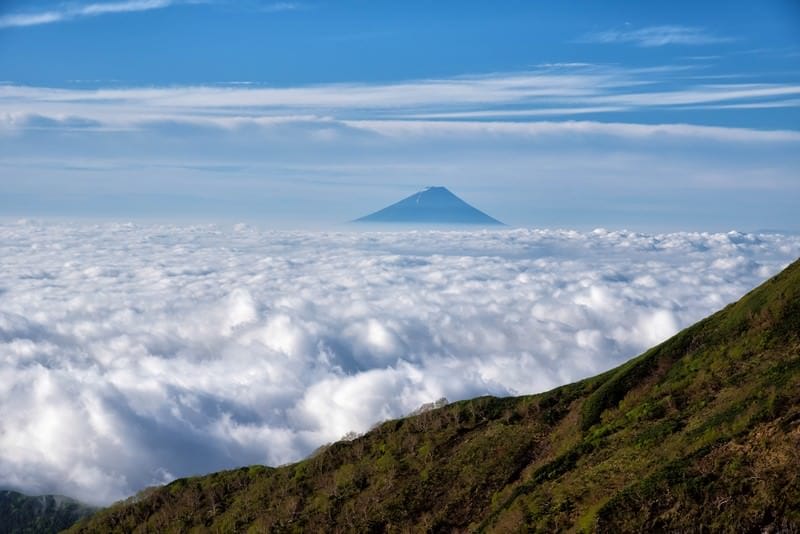
Currently, Mt. Fuji has four climbing routes, with Fujinomiyaguchi being the highest starting point. The 5th station marks the beginning of climbing routes and maintains cool temperatures even in summer.
Note: "Go" (station) represents climbing difficulty levels, dividing the trail from base to summit into 10 sections.
Even during climbing season in summer, temperatures at the 5th station range from 15-16°C. As altitude increases, wind effects become more pronounced, making the perceived temperature even lower (approximately -1°C per 1m/s wind speed).
Climate Near Mt. Fuji's Summit (3,776m)

Mt. Fuji's annual average temperature is very low at -7.1°C, reaching only 6-7°C even in August. The temperature difference from ground level can approach 20°C. Nights are even colder, with winter-like temperatures even in summer.
While many tourists visit for sunrise viewing, temperatures can drop to near 0°C before dawn, requiring precautions against hypothermia.
Additionally, Mt. Fuji is famous for its rapidly changing weather conditions. Climbers should never push themselves too hard and always prioritize safety.
Climate Around Mt. Fuji Explained by Season
Climate During Climbing Season (Early July - Mid-September)
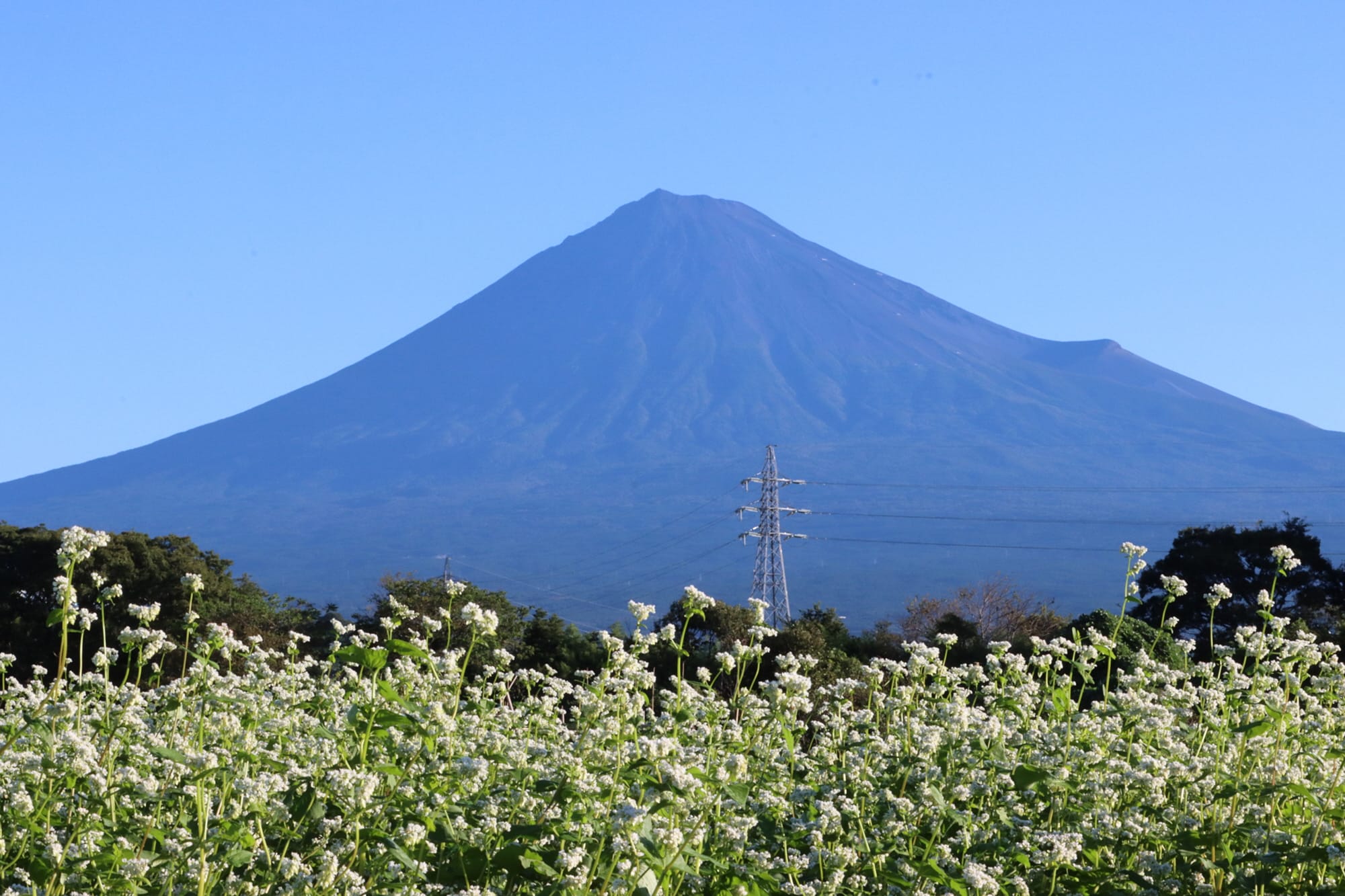
The official climbing season for Mt. Fuji typically runs from early July to early September. At the summit (3,776m), the temperature is about 22-23°C lower than at the base, and snow may remain even in midsummer.
While recent news has highlighted snow-free periods on Mt. Fuji, possibly due to global warming, the mountain is typically only free of snow around September, at summer's end. During the climbing season, while extreme cold isn't a major concern, climbers should prepare for temperatures cold enough for snowfall.
The weather on Mt. Fuji can be quite severe, with typhoon-strength winds being common and occasional thunderstorms. It's advisable to regularly check weather forecasts (available up to two weeks in advance) and real-time weather observation sites for Mt. Fuji.
Recommended Clothing for Climbing Season (For Climbers)
For the climbing season, full professional climbing gear is recommended. While cold protection is crucial, quick-drying inner layers are essential as the challenging trails can cause heavy sweating.
Sturdy two-piece rainwear is necessary for sudden rain and wind. All-weather trekking shoes are recommended. Work gloves, regular gloves, towels, spare inner wear, and socks are good to have. Don't forget coins for mountain hut toilets.
Recommended Clothing for Climbing Season (For Non-Climbers)
The Mt. Fuji area often experiences sudden weather changes, with temperature variations equivalent to summer and winter within hours depending on elevation.
Even if not climbing, wear layers for easy temperature adjustment. Summer sun exposure can cause significant physical stress and fatigue. Use hats, sunglasses, parasols, and sunscreen for full protection. Avoid revealing clothes and opt for UV-protective clothing.
Related Article
・Explore Mt. Fuji in Summer: A Complete Guide for Foreign Visitors
Fuji in summer, climbing Mt. Fuji is an absolute must. However, in addition to mountain climbing, there are actually many sightseeing spots around Mt.Fuji.
Climate Before Climbing Season (Spring to Summer)
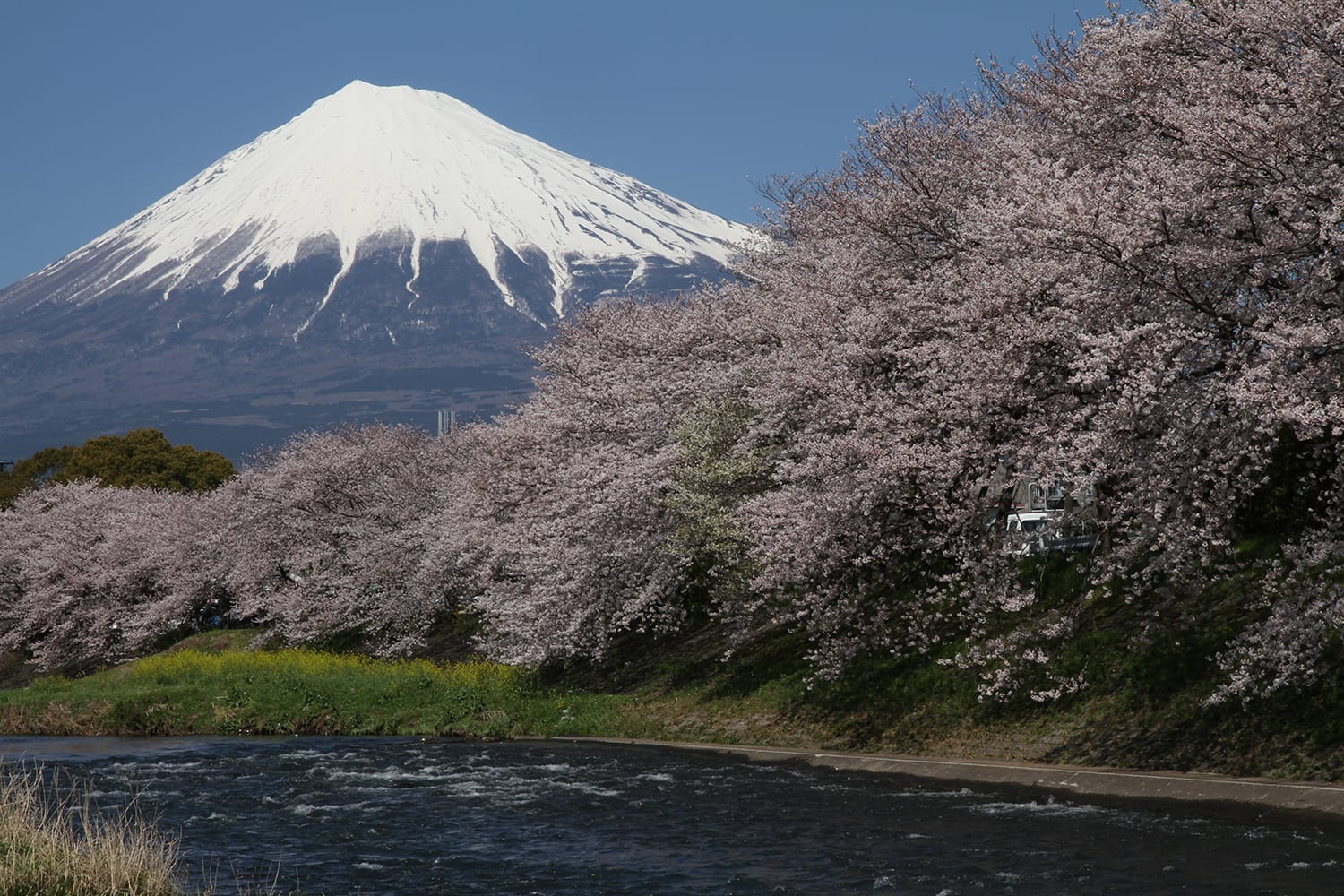
Around the Fuji Five Lakes, a popular tourist spot with Mt. Fuji views, temperatures are about 5°C lower than central Tokyo, with particularly cool mornings and evenings.
Mid-April brings the spectacular combination of Japan's two major symbols - Mt. Fuji and cherry blossoms. While days are warm with spring sunshine, temperatures drop significantly after sunset, often bringing "flower-viewing chills."
From early May's Golden Week holidays, the weather becomes consistently warmer, making foot-of-the-mountain day camping and outdoor activities pleasant. This area, traditionally loved as a summer retreat, enters its prime season.
Recommended Clothing for Pre-Climbing Season
Early spring's mountain weather brings significant temperature variations between mornings/evenings and midday, so thick cardigans or down jackets are recommended.
Even approaching summer, winds from Mt. Fuji can feel cold, so having hoodies or light outer layers is convenient.
Related Article
・Mount Fuji in Spring: Complete Guide to Cherry Blossoms, Events & Activities 2025
Discover the scenery around Mount Fuji in spring and learn about our specially recommended spots for the season. If you're planning a spring visit, this guide is a must-read!
Climate After Climbing Season (Autumn to Winter)
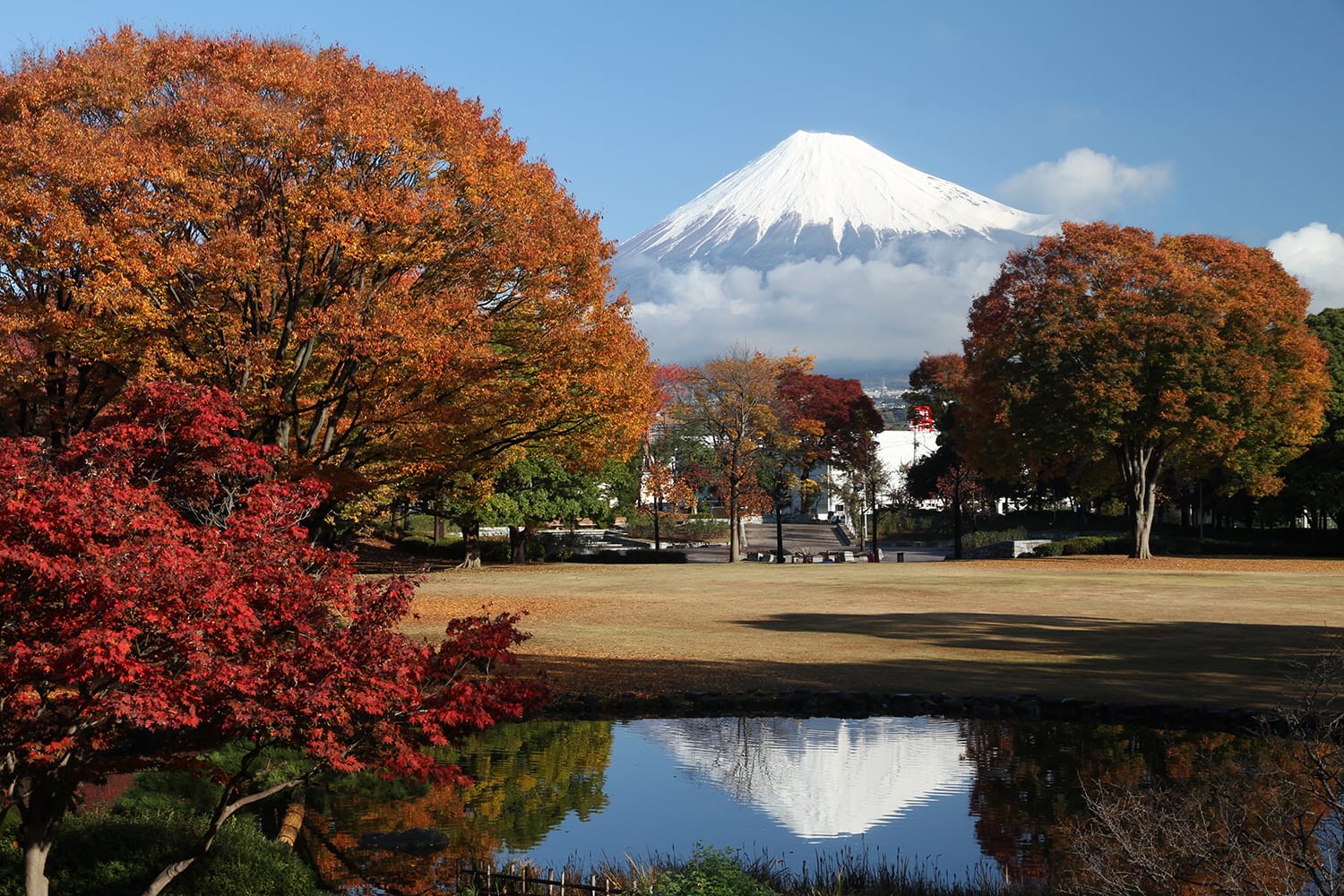
The Fuji Five Lakes area has a comfortable average temperature of about 18°C in September, perfect for cultural activities like museum visits around the lakes. However, this is a rainy period, so rain gear is essential.
Around October, when Mt. Fuji's first snow is observed, the surrounding area cools significantly, with average minimum temperatures dropping below 10°C.
November, peak autumn foliage season, sees average highs of 14.0°C and night temperatures below 3°C. Popular illuminated foliage spots are cold enough to require bonfires.
The cold, clear air makes this season ideal for stargazing.
Related Article
・Autumn at Mt. Fuji: A Complete Guide for Foreign Visitors
Experience the landscapes surrounding Mount Fuji in fall and explore our favorite locations for the autumn season. If you're heading there in fall, don't miss out on this essential guide!
Spring and fall stand out among Japan's four seasons for their particularly pleasant weather and stunning natural beauty. In spring, cherry blossoms bloom in magnificent displays, while in fall, the autumn foliage paints Mount Fuji in vibrant colors.
These two seasons are also known for being the best times to enjoy Japanese cuisine at its finest.
Spring and fall are the perfect seasons to join a Magical Trip tour to experience delicious Japanese food and breathtaking views of Mount Fuji. Come visit during either season and make the most of your time exploring the Mount Fuji area!
・Mt. Fuji Full-day Nature Guided Tour with a Private Chartered Car & Guide
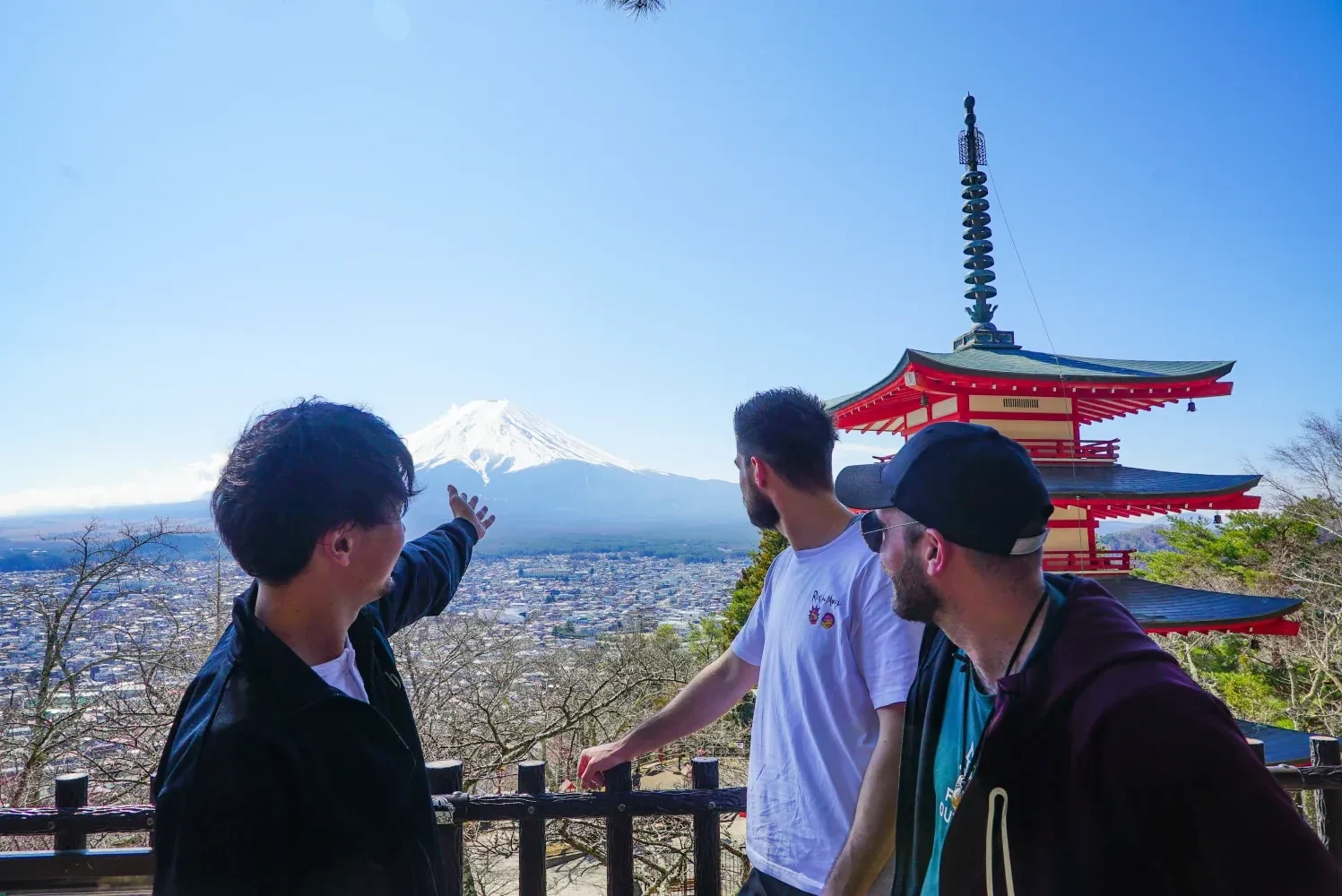
Winter (December - March) Climate
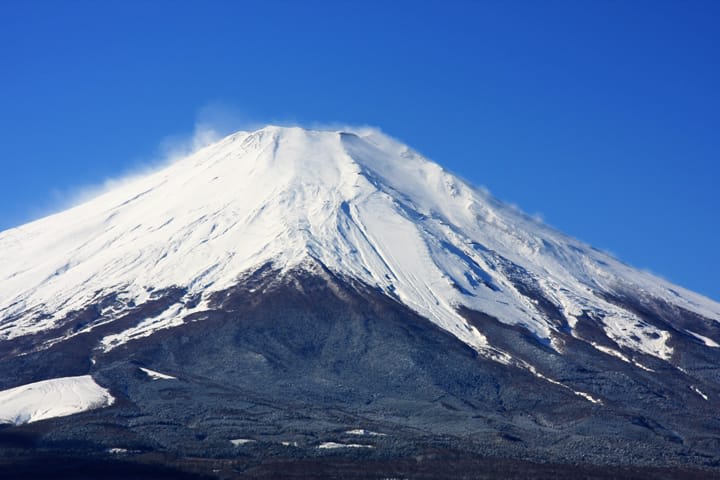
During winter, Mt. Fuji's summit and base experience severe low temperatures with frequent snowfall. The strong seasonal winds also contribute to harsh weather conditions.
Around the Fuji Five Lakes in December, average minimum temperatures drop to -3°C. From January to February, average high temperatures are around 6°C, with average lows reaching about -5°C.
Despite facing severe winter cold, there's a silver lining - relatively frequent clear days until March. One of winter's greatest pleasures is viewing Mt. Fuji against a crisp, blue sky in the crystal-clear air.
Related Article
・A Guide to Enjoying Mt. Fuji in Winter for Foreign Tourists 2025 w/map
While the area around Mt. Fuji gets extremely cold in winter, these freezing temperatures create many breathtaking views that can only be seen during this season. If you'd like to experience the stunning scenery, such as Mt. Fuji adorned with snow or the beautiful frozen lakes, feel free to use this guide as you explore the area.
Recommended Clothing for Winter
For outdoor activities, ensure thorough warmth with thick inner wear, sweaters, and down coats.
Japanese winters are typically dry, so many people wear masks to protect their throats. It's also reassuring to prepare snow boots, scarves, earmuffs, gloves, knit caps, and pocket warmers as needed.
As with summer, there can be dramatic temperature differences between indoors and outdoors, so layering items like lightweight ensemble sweaters are useful.
Note about Mt. Fuji's Weather and Climate:
- The mountain creates its own microclimate, affecting local weather patterns
- Weather conditions can change rapidly at any time of year
- Temperature decreases approximately 0.6°C for every 100m increase in elevation
- The summit area experiences some of Japan's most extreme weather conditions
- Local weather forecasts should be checked frequently before visiting
[Seasonal] Recommended Events with Highlights
Let me introduce you to the seasonal events held around Mount Fuji.
If you're interested, be sure to check out our article that breaks down all the events for 2025 by month.
We've carefully selected and detailed traditional events, food festivals, and unique seasonal experiences that you can only enjoy at specific times of the year, along with what makes each one special.
Related Article
・Ultimate Guide to Mt. Fuji Events & Festivals 2025: Cherry Blossoms, Fireworks, and Seasonal Celebrations
Climbing Season (Early July - Mid-September)
Mt. Fuji Mountain Opening Festival
Source: Official website
Mt. Fuji's climbing season opens annually on July 1st. To celebrate this occasion, the "Mt. Fuji Mountain Opening Eve Festival" is held on June 30th, when the weather typically becomes suitable for climbing with average temperatures around 15-20°C at the base.
This is a traditional event where active Fuji-ko members (religious groups that have worshipped Mt. Fuji since the 16th century) and local citizens participate. A parade proceeds from Kanadori Park to the starting point of the Yoshidaguchi climbing trail at Kitaguchi Hongu Fuji Sengen Shrine.
After arriving at the shrine, traditional Japanese Nagoshi Oharae ceremony (purification ritual for the first half of the year) and path-opening rituals are performed, announcing the start of Mt. Fuji's climbing season with its characteristic summer climate.
<Information> *2024 Information
Date: June 30th, 2024
Access: 1-minute walk from "Sengen Shrine Mae" bus stop via Fuji Kyuko Bus from "Mt. Fuji" Station on Fuji Sanroku Electric Railway Fujikyuko Line
Admission: Free
Website: https://fujiyoshida.net/event/147
Fuji Five Lakes Fireworks Festival
Source: Official website
Every summer from August 1st to 5th, when the weather is typically warm and clear around Mt. Fuji, fireworks festivals are held daily across the Fuji Five Lakes region against the backdrop of the sacred mountain.
The festival begins with the Hokosai at Lake Yamanaka, where fireworks are launched from four different areas: Yamanaka, Asahigaoka, Hirano, and Nagaike.
On the second day, the "Saiko Ryugu Festival" features a collaboration of floating lanterns and fireworks on Lake Saiko.
The third day's "Shinko Festival" at Lake Motosuko launches about 700 colorful fireworks. With many camping sites nearby, enjoying the fireworks while camping is recommended.
The fourth day's "Ryoko Festival" at Lake Shojiko includes not only fireworks but also concerts and other atmospheric events. The close proximity to the launch site offers an impressive viewing experience.
The finale at Lake Kawaguchi, the "Kojo Festival," is the largest among the Fuji Five Lakes events, featuring approximately 10,000 fireworks in a grand display.
<Information> *2024 Information
Dates: August 1-5, 2024
Location: Fuji Five Lakes (Lake Yamanaka, Lake Saiko, Lake Motosuko, Lake Shojiko, Lake Kawaguchi)
Admission: Free
Website: https://lake-yamanakako.com/event/10430
Pre-Climbing Season (Spring-Summer)
Fuji Motosuko Resort (Fuji Shibazakura Festival)
Source: Official website
The "Fuji Shibazakura Festival" is the most unmissable event at Fuji Motosuko Resort, known for its floral attractions. The mild spring weather around Mt. Fuji creates perfect conditions for viewing these flowers.
Around 500,000 moss phlox plants, the largest scale in the Kanto region, bloom across the vast grounds at the foot of Mt. Fuji. The vivid color contrast creates a beautiful spring spectacle against Mt. Fuji's still snow-capped peak.
Visitors can enjoy a breathtaking vista of pink covering the entire area. Seven varieties of moss phlox, including McDaniel Cushion and Autumn Rose, bloom magnificently, creating stunning scenery with towering Mt. Fuji in the background.
<Information> *2024 Information
Dates: April 13 - May 26, 2024 *Dates may vary depending on weather conditions
Access: Direct access from "Fuji Motosuko Resort (Fuji Shibazakura Festival Venue)" bus stop via Fuji Kyuko Bus from "Kawaguchiko" Station on Fuji Sanroku Electric Railway Fujikyuko Line
Admission: 1,000-1,200 yen
Website: https://www.kamigamojinja.jp/en/
Yoshiwara Gion Festival
Source: Wikipedia
The Yoshiwara Gion Festival is celebrated in the Yoshiwara district (Fuji City, Shizuoka Prefecture), which has long prospered as a base for Mt. Fuji pilgrimages and as a travel hub. The festival, which began in the 19th century to pray for good health, is affectionately known locally as "Otenno-san (Tenno Festival)."
Twenty-one unique festival floats (dashi - traditional pulled or carried festival displays in Japan) from six local shrines (Tenjin Shrine, Yasaka Shrine, Wada Hachimangu Shrine, Yamanokamisha Shrine, Hachimangu Shrine, and Kinomoto Shrine) parade magnificently along the approximately 1km stretch of Yoshiwara Honmachi Street and its surroundings. With Mt. Fuji's climate creating a perfect backdrop for outdoor festivities in early summer, the festival has become a cherished tradition.
Food stalls line the pedestrian-only streets, creating a lively festival atmosphere.
<Information> *2024 Information
Dates: June 8-9, 2024
Access: 5-minute walk from Yoshiwara-Honcho Station on the Fuji Gakunan Railway
Admission: Free
Website: https://yoshiwara-shoutengai.com/
Post-Climbing Season (Autumn-Winter)
FUJI-Q HALLOWEEN Horror Night
Source: Official website
"FUJI-Q HALLOWEEN Horror Night" is a popular annual Halloween event held at Fuji-Q Highland. The park is famous for consistently ranking first in the "Real Haunted House Ranking."
The event offers the "ultimate" horror experience where visitors confront ghosts in the dark, quiet park after closing. Taking advantage of the cool autumn weather near Mt. Fuji, the event creates an eerily perfect atmosphere.
One unique feature is access to normally restricted backstage areas and closed attractions, offering a completely different atmosphere from the daytime amusement park.
Challenge various missions as if you're the protagonist of a horror movie. It's terrifying yet addictive - an unforgettable experience.
<Information>
Dates: October 25 (Fri) and 27 (Sun), 2024
Access: Direct access from Fuji-Q Highland Station via JR East Chuo Line and Fujisan Railway Fujikyuko Line from Otsuki Station
Fee: 3,000 yen *Requires additional admission pass (Free Pass, Afternoon Pass, or Sunset Night Pass)
Website: https://www.fujiq.jp/
Fuji Kawaguchiko Autumn Leaves Festival
Source: Official website
The "Kawaguchiko Momiji Corridor" on the northern shore is Lake Kawaguchiko's premier autumn foliage spot. The weather patterns around Mt. Fuji create ideal conditions for vibrant fall colors.
The Fuji Kawaguchiko Autumn Leaves Festival attracts many visitors during the foliage season. During the festival period, the venue area bustles with food stalls, souvenir shops, and craft markets.
The main attraction is the illuminated Momiji Corridor. From sunset to night, the brilliantly red autumn leaves are lit up, creating an even more mystical landscape.
The tunnel of illuminated maple leaves presents an otherworldly beauty. The moment near sunset when you can see both the lit-up autumn leaves and Mt. Fuji is particularly spectacular. Don't miss it!
<Information>
Dates: October 26 - November 20, 2024
Access: From Otsuki Station on JR East Chuo Line and Fujisan Railway Fujikyuko Line, take train to Kawaguchiko Station, then transfer to Kawaguchiko Loop Bus Red Line and get off at "Itchiku Kubota Art Museum." About 20-minute walk from there
Admission: Free
Website: https://kitakawaguchiko.co.jp/archives/introduce/post31
Winter (December-March Climate)
Lake Yamanakako Illumination "Fantasyum"
Source: Official website
The Lake Yamanakako Illumination "Fantasyum" has become a popular winter festival.
Set against Mt. Fuji's winter climate backdrop and beneath a star-filled sky, vibrant illuminations create a mystical landscape. The creative displays include Japanese umbrellas, offering a mysterious fusion of traditional Japanese aesthetics with modern lighting technology.
Visitors can enjoy food and beverages in the park's heated greenhouse, making it perfect for an extended stay. Don't miss the spectacular winter fireworks displayed on Saturdays and New Year's Day during the event period.
<Information>
Dates: December 1, 2024 (Sun) - January 13, 2025 (Mon)
Access: 3-minute walk from "Hananomiyako Koen Iriguchi" bus stop via Fuji Kyuko Bus/Fuji Kyuko Mobility from "Kawaguchiko" Station on Fuji-san Roku Denki Railway Fujikyu Line
Admission: 350 yen
Website: http://www.hananomiyakokouen.jp/
Lake Kawaguchiko Winter Fireworks
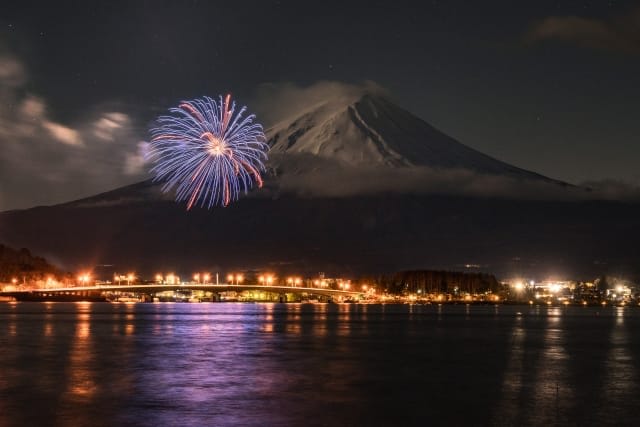
The "Lake Kawaguchiko Winter Fireworks" has become a winter highlight around Mt. Fuji.
The weather conditions unique to Mt. Fuji's winter climate create a perfect setting for these fireworks, which appear even more brilliant against the crisp, cold air than their summer counterparts. The dry winter atmosphere carries the thunderous sounds with remarkable clarity, creating an immersive experience.
On calm evenings when the lake surface is still, visitors can witness spectacular "inverse fireworks" reflected in Lake Kawaguchiko. The main launch site is at Oike Park, with additional displays from Tatami-iwa and Yagisaki Park. Don't miss the moments when fireworks are launched simultaneously from all three locations.
<Information>
Dates: Planned for 10 shows on Saturdays and Sundays from January 25 to February 23 (Mt. Fuji Day), 2025
Access: Directly accessible from "Kawaguchiko Herb Hall" stop on the Kawaguchiko Loop Bus Red Line from "Kawaguchiko" Station on Fuji-san Roku Denki Railway Fujikyu Line
Admission: Free
Website: https://fujisan.ne.jp/pages/403/
Summery
The area around Mount Fuji offers unique attractions throughout the year, making it a perfect spot to experience Japan's four seasons. Fall and spring are particularly stunning, offering spectacular views of cherry blossoms or autumn foliage against the backdrop of Mount Fuji.
However, because of these distinct seasonal changes, you'll need to prepare accordingly for each season. If you're planning to climb Mount Fuji, make sure you're thoroughly prepared and don't underestimate the challenge.
For those looking for a more casual Mount Fuji experience, consider trying Magical Trip's "Mt. Fuji Full-day Nature Guided Tour with a Private Chartered Car & Guide," which includes private car transportation from Tokyo.
Magical Trip also offers other guided tours in Tokyo and Osaka, where knowledgeable local guides who know these cities inside and out can show you around.
・Tokyo Bar Hopping Night Tour in Shinjuku
・Asakusa Cultural Walk & Matcha Making Tour
・Fushimi Inari Hidden Hiking Tour
・Osaka Bar Hopping Night Tour in Namba

